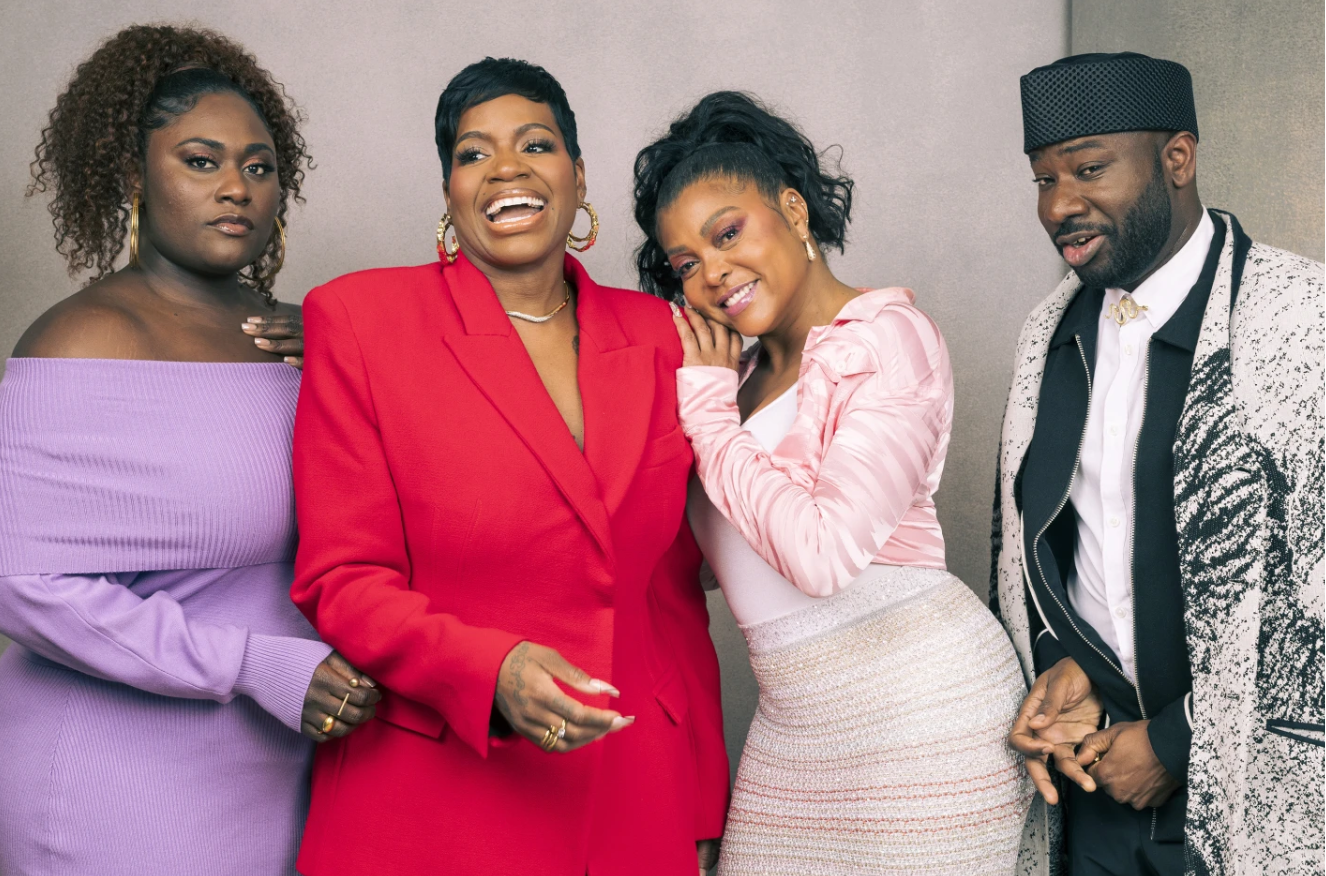
Finding new dimensions, sisterhood, and healing in ‘The Color Purple’
The protagonist of Alice Walker’s Pulitzer Prize-winning novel tells her story of sexual, physical and psychological abuses in the early 20th century South in a series of letters to God. And it was a character she found it difficult to leave behind at the end of the day. Even the prospect of starring in her first major motion picture didn’t seem worth it.
But director Blitz Bazawule had a different vision: He wanted to give Celie an imagination. This Barrino found intriguing.
Oprah Winfrey is one of several big-name producers on “The Color Purple,” alongside Spielberg, Quincy Jones and Scott Sanders. Winfrey got her acting break and first Oscar nomination playing Sofia in the 1985 adaptation, before helping Sanders turn it into a Broadway musical 20 years later.
Bazawule was not an obvious candidate to direct this film, however. The multi-hyphenate Ghanaian artist had received acclaim and recognition for co-directing Beyoncé’s visual album “Black is King.” The only other film he had under his belt was the microbudget “The Burial Of Kojo,” which was made for less than $100,000.
“I thought, if I could just find a way to show the audience how this Black woman from the rural South was able to imagine her way out of pain and trauma it will debunk a myth that is that people who have dealt with abusing trauma are docile and passive or waiting to be saved,” Bazawule said. “If we could just imbue in (Celie) that scale, then that’s the version that needed to exist. Thankfully they said yes.”
They would have to jump through some hoops, however, to secure the kind of budget (reportedly around $100 million) that they needed to support the vision, including auditioning Henson, an Oscar-nominated actor, and Brooks, who already had a Tony nomination for her portrayal of Sofia.
“We were not the studio’s choices” Henson said. “I just felt some way about having to audition. I’m Academy Award nominated. I had just got finished singing on NBC’s ‘Annie Live.’ But I checked my ego and I did it. I went in as Shug. I found a dress, had a flower in my hair and faux fur stole and I kicked the door down because I didn’t want them to ever second guess me again.”
For Brooks, it was a six-month process that had her doubting herself. A lot of the people involved in “The Color Purple” felt the exhaustion of both having to prove themselves yet again, but also wanting to rise to the challenge nonetheless because this film was worth it.
“This is a huge undertaking to be part of,” said Brooks. “This movie is about legacy and it’s what I’ve been calling a cinematic heirloom.”
Her Broadway production was very minimalist and stripped down, so to be on location in Georgia, around Macon, Savannah, Atlanta and the small town of Grantville, was revelatory.
“My world really opened up because I got to use all of my senses,” Brooks said. “I got to explore all of Sofia because now I have a juke joint and I have a dinner table. I have a house. We had a white mob attacking me.”
“It’s probably the perfect confluence of my amazing technical and creative teams,” Bazawule said.
The film gives a new boldness to Celie and Shug’s relationship with one another and more dimensions to the male characters, including Colman Domingo’s Mister.
And all carry the weight of responsibility not only to the material and its predecessors, but also to future films made with primarily Black casts at this level.
The question of awards is a loaded one. Though “The Color Purple” has all the makings of a big Oscar contender (Barrino and Brooks have already been nominated for Golden Globes), it comes with history. Spielberg’s film was nominated for 11 Oscars and infamously won none. And then there is the even stickier subject of Black women and Hollywood awards. Halle Berry remains the only Black best actress Oscar winner.
Bazawule is not particularly interested in the “dog and pony show” of awards season. It’s hard for him to fathom how anyone can pit one film against another, but he does understand that there are real gains in earning potential and creative freedom that happen if his actors, especially the women, get nominated and win.
“Our job was to go in and honor Alice Walker’s brilliant book. We did that. We found our healing through it and we’re an amazing group together. Our Q&A’s are out of this world,” he said, before taking a pause. “Now THAT I want and award for.”
All seem to agree that what they experienced is bigger than any validation from an award.
“There’s something magical about this story,” Brooks said. “It really does tamper with your heart in the best way. It opens it up. I’ve never experienced anything like what I’ve experienced during the journey of working on ‘The Color Purple.’”


